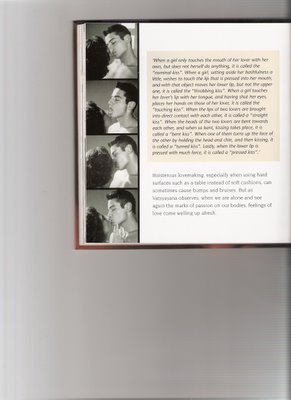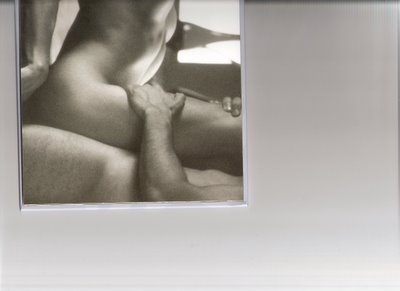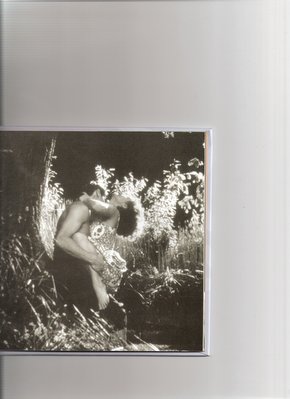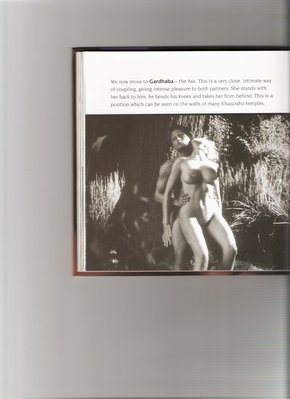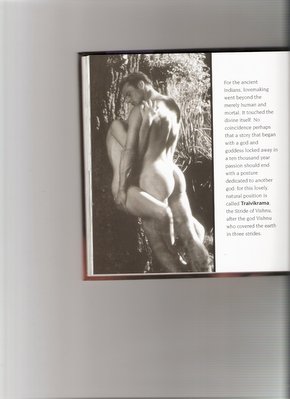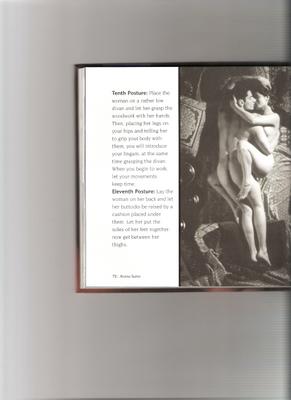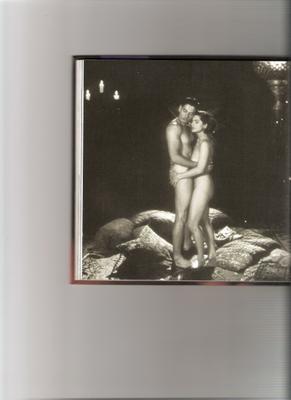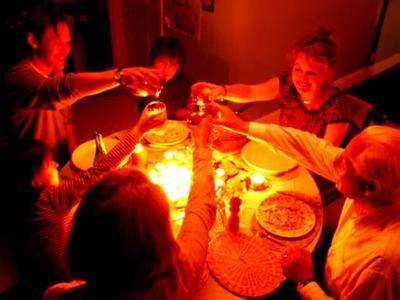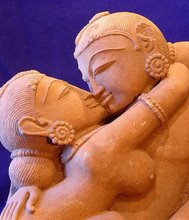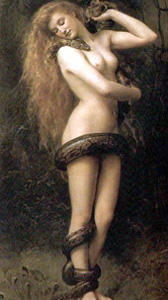

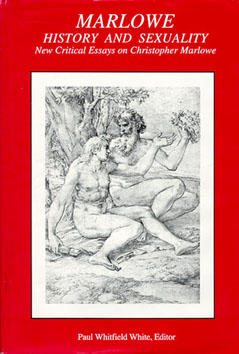



The History of Sexuality – About Foucault
Author unknown
Michel Foucault's "The History of Sexuality" pioneered queer theory. In it he builds an argument grounded in a historical analysis of the word "sexuality" against the common thesis that sexuality always has been repressed in Western society. Quite the contrary: since the 17th century, there has been a fixation with sexuality creating a discourse around sexuality. It is this discourse that has created sexual minorities.
This page only covers the views he presents in "The History of Sexuality".
In "The History of Sexuality", Foucault attempts to disprove the thesis that Western society has seen a repression of sexuality since the 17th century and that sexuality has been unmentionable, something impossible to speak about. In the 70s, when the book was written, the sexual revolution was a fact. The ideas of the psychoanalyst Wilhelm Reich, saying that to conserve your mental health you needed to liberate your sexual energy, were popular. The past was seen as a dark age where sexuality had been something forbidden.
Foucault, on the other hand, states that Western culture has long been fixated on sexuality. We call it a repression. Rather, the social convention, not to mention sexuality, has created a discourse around it, thereby making sexuality ubiquitous. This would not have been the case, had it been thought of as something quite natural. The concept "sexuality" itself is a result of this discourse. And the interdictions also have constructive power: they have created sexual identities and a multiplicity of sexualities that would not have existed otherwise.
Confession is the basis of sexuality
Historically, there have been two ways of viewing sexuality, according to Foucault. In China, Japan, India and the Roman Empire have seen it as an "Ars erotica", "erotic art", where sex is seen as an art and a special experience and not something dirty and shameful. It is something to be kept secret, but only because of the view that it would lose its power and its pleasure if spoken about.
In Western society, on the other hand, something completely different has been created, what Foucault calls "scientia sexualis", the science of sexuality. It is originally (17th century) based on a phenomenon diametrically opposed to Ars erotica: the confession. It is not just a question of the Christian confession, but more generally the urge to talk about it. A fixation with finding out the "truth" about sexuality arises, a truth that is to be confessed. It is as if sexuality did not exist unless it is confessed. Foucault writes:
"We have since become an extraordinarily confessing society. Confession has spread its effects far and wide: in the judicial system, in medicine, in pedagogy, in familial relations, in amorous relationships, in everyday life and in the most solemn rituals; crimes are confessed, sins are confessed, thoughts and desires are confessed, one's past and one's dreams are confessed, one's childhood is confessed; one's diseases and problems are confessed;..."
This forms a strong criticism of psychoanalysis, representing the modern, scientific form of confession. Foucault sees psychoanalysis as a legitimization of sexual confession. In it, everything is explained in terms of repressed sexuality and the psychologist becomes the sole interpreter of it. Sexuality is no longer just something people hide, but it is also hidden from themselves, which gives the theological, minute confession a new life.
"Coming out" as a concept did not exist when Foucault wrote "The History of Sexuality", but this process of confessing homosexuality can surely be interpreted as an expression of this urge to confess. There seems to be a compulsion to reveal one's sexuality to confirm its existence in our society. In Ars erotica, a very different view is held, and people are content to let it remain a secret in the positive sense of the word.
The reason sexuality should be confessed is to be found in the Christian view of it. It was not, as it is today, seen as a strong, obvious force, but as something treacherous, something only to be found by careful introspection.
Therefore every detail had to be laid forth in confession; every trace of pleasure experienced had to be examined to find the traces of sin.
In this attention to details the reason sexuality is given such importance in our society is to be found. Making sexuality something sinful did not make it disappear. Quite the contrary: it was reinforced and became something to be noticed everywhere.
Power relations
There was also an element of social control in this. A power relation was created between the preacher and the confessant, between the psychoanalyst and his patient. Power relations are to Foucault central to any analysis of society, and this is especially true for sexuality. Power relations are formed in all relations where differences exist.
What Foucault means by power is not necessarily what is ordinarily meant by the word. It is something ubiquitous and cannot be thought of as dual, as creating a division between those dominating and those being dominated. Power in Foucault's meaning of the word is not an exclusively negative force. He claims that we have had a juridical view of power in our society; we tend to see it as something negative, oppressing, defining what is not to be done. Instead, power is the basis of Foucault's analysis of society. Common power relations related to sexuality are, in addition to the ones mentioned between the one who confesses and the one that receives the confession, those between teacher and pupil, between parent and child, and between doctor and patient.
Sexuality in the 19th century
Thomas Kuhn is a philosopher of the history of science, who claims we should understand how what is now seen as prejudice could be accepted as science.
With enlightenment, the view of sexuality as something sinful to be confessed mutated. It was adapted to modern demands of rationality by turning itself into a science. Foucault makes a strong distinction between what we would still today call science and a prejudicial doctrine on human procreation.
"Comparing these discourses on human sexuality to those from the same epoch on animal and vegetal reproduction, the difference is surprising. Their weak tenability - I won't even say in scientificity, but in elementary logic, places them apart in the history of knowledge."
The doctrines on sexuality postulated several "unnatural" sexual behaviors. In the 16th century, the focus was on regulating the sexuality of the married couple, ignoring other forms of sexual relations, but now other groups were identified: the sexuality of children, criminals, mentally ill and gays.
"The perverse" became a group, instead of an attribute. Sexuality became seen as the core of some peoples' identity. Homosexual relations had been seen as a sin that could be committed from time to time, but now a group of "homosexuals" emerged. Foucault writes: "The sodomite was a recidivist, but the homosexual is now a species."
"The homosexual of the 19th century became a person: a"past, a history and an adolescence, a personality, a life style; also a morphology, with an indiscreet anatomy and possibly a mystical physiology. Nothing of his full personality escapes his sexuality."
Seeing gays as a group is now taken for granted, but before the 18th century the idea would never had occurred to ask the question whether homosexuality is a function of heredity or of upbringing. It was simply not seen as being a fundamental part of the person, but instead as an action, something s/he did.
But homosexuality was not the only object of study for the medical "science".
Foucault identifies four reoccurring themes:
The body of women became sexualized because of its role as a child bearer. The concept "hysteria" was invented and seen as a result of sexual problems.
The pedagogization of the sexuality of children. Children should at all costs be protected from the dangers inherent in masturbation and other sexuality.
The socialization of reproduction. The importance of sexuality for reproduction is recognized and put into context in the study of population growth.
The sexuality of adults becomes an object of study and all forms of "perverse" aberrations are seen as dangers.
Foucault emphasizes that the aim of these new moral codes was not to abolish all forms of sexuality, but instead to preserve health and procreation. Many forms of sexuality were seen as harmful and they wanted to protect health and the purity of the race. A mixture of ideas on population growth, venereal diseases and heredity ("degeneration" was to be avoided) created the idea that many forms of sexual conduct where dangerous.
Constructivism
Now that sexual actions were being identified and their naturalness and healthiness was analyzed, the concept of "sexuality" was created. Foucault comments on the four phenomena mentioned above:
"What are these strategies about? A struggle against sexuality? Or an attempt to control it? ... Actually, it is rather the production of sexuality. It should not be conceived of as a distinction founded in nature that power attempts to subdue, or as a dark domain that knowledge attempts to gradually uncover. It is the name that can be given to a historical measure...
This view makes Foucault one of the first constructivists" in this area, claiming that sexuality and sexual conduct is not a natural category, having a foundation in reality. Instead it is a question of social constructions, categories only having an existence in a society, and that probably are not applicable to other societies than our own.
This is why we should not speak of "homosexuality" in, for example, antique Greece. What we now call homosexuality cannot exist outside our specific cultural context. The same goes for all sexuality. Sexual intercourse is necessary for procreation, but that does not mean that sexuality, comprising and theorizing about all erotic behavior, is a natural or necessary category. Sexuality is more than sexual behavior. The largest part of its meaning lies in its cultural connotations.
It is this view that has given "The History of Sexuality" its significance. For the first time, sexuality is analyzed as a social construction, a perspective making it possible to study the origins and the development of our view of sexuality in a totally new way.http://www.ipce.info/ipceweb/Library/history_of_sexuality.htmCustomers who bought this book also bought
The History of Sexuality : The Use of Pleasure (Vintage) by
Michel FoucaultThe History of Sexuality : The Care of the Self (Vintage) by
Michel FoucaultDiscipline & Punish : The Birth of the Prison (Vintage) by
Michel FoucaultGender Trouble (Tenth Anniversary Edition) by
Judith ButlerMadness and Civilization : A History of Insanity in the Age of Reason (Vintage) by
Michel FoucaultPower/Knowledge : Selected Interviews and Other Writings, 1972-1977 by
Michel FoucaultExplore Similar Items: in
BooksThe history of women’s sexuality and reproduction has been fraught with issues of control within the context of patriarchy, and in particular within the Judeo/Christian mentality so prevalent within western culture. To understand the reasons for this conflict is to understand both the history and the place of women in western religious history. The story of conflicts surrounding women’s sexuality and reproduction in western Christian culture can be viewed in regard as having its origins in early Judaic tradition and religious lore, as the roots of Christianity are firmly entrenched in Judaism. Beginning with the creation myth central to both faiths, one finds early on the religious justifications used in the argument for the subjection of women. It has however been pointed out by feminist scholars of religion that it was in fact Eve who in the Genesis story is the one who debates the moral issues and implications of partaking of the forbidden fruit, and Adam in the narrative is only involved in its consumption. (MacHaffie p. 13). It is perhaps Eve who is punished the more severely of the two, through forced subjection to her husband Adam (and your desire shall be unto your husband), who it would seem from the story is perhaps not the brightest of the pair. Furthermore, (speaking with a note of sarcasm) to be commanded by God to obey someone to whom you were created as equal does seem a harsh punishment. However, the arguments with regard to Eve’s “temptation” of Adam, which are often it seems based on the assumption that she used her feminine whiles to lure him are totally unfounded as a close reading of the Genesis story reveals. (MacHaffie p. 13). Hence, the arguments for a woman’s more sexualized nature, as pathways to sin are unfounded, in regard to Eve. It should be noted however, that there are two accounts of the creation myth in Genesis, and there are also two versions of womanhood before the fall from Gods grace, Eve being the better known of the two. Jewish Post-Biblical tradition, which also found its way into early Christian tradition, (Catholicism in particular) describes another woman, Lilith, as purportedly being the first wife of Adam. It is the story and legend of Lilith, a highly sexualized and independent caricature of womanhood who may in fact be the original culprit, leading to the myth surrounding woman’s “seduction” of man. (Mack and Mack, 1999, p. 200). However, nowhere in the story of Adam and Eve’s temptation is the use of feminine whiles even implied. Nonetheless, the myth has been perpetuated. Even in more modern times the story of the fall from grace has been taken apart in manners such as that of the psychoanalytical tradition and has been rendered a story of seduction and moral depravity. (Wulff. 1997, p.295).The advantages to this rationale are plainly visible for the continued propagation of patriarchy as stemming from a supposed Divine right of male over female, and argument for such have been used for millennia. (MacHaffie p. 12). In Christian thought, this was translated into the doctrine of Natural Law by such early Christian thinkers as St. Tomas Aquinas. Although contrary to Christ’s teachings and examples found in the gospels of the equality of women (MacHaffie p. 14-17) took less than a generation for the early Christian Church to once again bind women under men in a hierarchal manner. Among the earliest Christian thinkers held accountable for this shift are, St. Paul the Apostle, who began to propagate this doctrine within the first generation after Christ. And in successive generations----St. Augustine and St. Tomas Aquinas, whose influence on the formation of Christian theology and doctrine with regard to women’s place within the Church are still hallmarks of the belief structure (Fox, 219), (MacHaffie p.20).Given the historical context of Christianity and its blossoming from Judaic society, and within Greco-Roman culture, which was patriarchal in nature, one begins to understand how the prevailing cultural norms of the time would eventually reassert themselves into Christianity. This shift was facilitated by the language used for God, among other things and has been considered fundamental in the propagation of a gendered hierarchy within Christian religious ethos (MacHaffie p.144). Given then the context of the Deity being viewed as masculine, this left no other status for the personification of womanhood as anything less than “other,” a status that early Christian theologians exploited to full advantage, facilitating a gendered hierarchy within Christianity.Hence, from this perspective it becomes apparent why issues related to women’s sexuality and reproductive choice have become so controversial within contemporary Christianity. Since for the most part Christianity adapted the traditional gender norms of the early societies in which it flourished, and indeed its doctrines are reflective of those, it becomes apparent that traditional Christianity could not survive the dawn of the twentieth-century and the Age of Enlightenment within the old-world gendered norms as it had previously done. The new view of the enlightened age, spread about by the protestant reformation, held that the individual could indeed be their own moral agent, capable of independent rational thought, and as such less influenced by the body of the Church as a whole. And while applied firstly to men in the new republic (that was to become known as the U.S.), the dynamic of power was to shift toward women, as men left the religious sector in favor of government office with the separation of church and state. (Seat). As women became aware of the power to assert themselves as moral agents within the new limits of the religious realm, the medieval idea that “Divine Origin” was the cause of societal structure began to shift, and human reason and choice were seen as the expanded criteria whereby societies would be able to govern themselves. There were however, limits to this “enlightened” form of thought, namely that the language of oppression changed from “Devine Law” to “Natural Law,” and as such biological endowment vs. Devine endowment became the catch phrase of the day used to justify the hierarchies of gender and race. In short it was a world that stood on the precipice of the modern age, when reason would dictate and humanities ills would be cured through the application of science made possible by the industrial revolution.All these dreams however came crashing down with the advent of WWI, which was followed within a generation by WWII, and the predominance of reason faltered. The disappointment that followed was expressed by poignantly by authors of the times such as E. Remarque (1897-1970) in the novel All Quite on the Western Front and J. Hillton’s (1900-1954) works such as Lost Horizon and Random Harvest. (Magill. p.27, 629). That reason, which Natural Law had found inherent in humankind, stood in question. Mankind, and in particular the male dominated societal structure had failed. Resultant of this was the resurgence of Natural Rights theory of ethics and morality, which briefly stated is such that there is no obligation to the “other” as upheld by Natural Law, only that one not violate the rights of another is all that is required (Bayles & Henley 1989, p. 25). This stance on morality and ethics would latter give way to what is known as Social Relativism, which confines moral reasoning to the system of beliefs of the society (Bayles & Henley, 1989 p.6). To deal then with the possibilities presented with Social Relativism, societies throughout the world have developed social constructs of moral and ethical behavior as well as the philosophies that theses moral and ethical codes entail. In Western thought the two main divisions being: Natural Law and Natural Rights. It is from these two differing standpoints that most divisions on morality and normalcy are judged in western social constructs, and the resurgence of Natural Rights, as an ethical framework was to have profound influence for women. Especially those who had contributed immensely to the war efforts, and had gained a taste for independency both economically and socially as a result of labor force participation, it was in this context that post-modern feminist began to come into their own---as a political force to be recognized. As agents of transformation the women who partook in the early and latter parts of twentieth century feminist movements became aware that they could do no worse than men had, and within less than 30 years of WWII had applied Natural Rights theory of ethics successfully in the argument for control of their own bodies and reproductive processes. Meanwhile, the Church, which had profited enormously from patriarchy, and in Medieval time had even gained economic advantage from such institutions as the bride price, wherein the inheritance of women’s wealth was passed on to the Catholic Church through the “marriage to Christ”, began to realize more fully the disadvantages of women as free moral agents (Havalind, 1999, p.254). Women’s role within the Catholic Church had already undergone significant change in that they were now accepted as full members in Christ, yet within the religious hierarchy they remained second-class citizens. Women’s primary role as described by Pope Paul VI in Humane Vitae (25 July 1968) was still that of supporting a male dominated Church Theological body and the breeding of successive generations of male leaders. Furthermore, it held that there was no higher calling for women than motherhood, and that to engage in reproductive control measures other than the natural or rhythm method was an affront to Christian morality and the commands of God.In short the Catholic Church had usurped the power of Natural law theory and applied it as a means of further subjecting women. The Catholic Church’s position on women’s place with regard to voice and position in the Church was further ratified by Pope John Paul II in his apostolic letter Mulieris Dignitatem which held that there was no higher calling for women than motherhood and as such it was the duty of Catholic women not to seek office in the Church---this at a time when other branches of Christianity were opening the clerical offices of ministry to women. Instead the Catholic Church chose to stress the “complementary” versus equal view of men and women (Fox, p. 238,242). Shussler Fiorenza was among the prominent voices to proclaim dissent with the church’s policy in regards to the issue of women’s procreative choice she argued that in the end “Any moral teaching on abortion must be shaped by the concern for ‘justice, mercy and faith’” (Fox, p. 222). Her argument against the Catholic Church’s eschewment of procreative choice, was similar to Beverly Harrison, who stated that:
"The problem, then, is that Christian theology celebrates the power of human freedom to shape and determine the quality of human life except when the issue of procreative choice arises […] In contrast, a feminist theological approach recognizes that nothing is more urgent, in light of changing circumstances of human beings on planet Earth, than to recognize that the entire natural-historical context of human procreative power has shifted"(Harrison. p.188, 119).
This alone presents moral and ethical problems for the theory of Natural Law when applied toward the principle of “Future Generations.” Whereas, in the past high infant mortality rates required that a woman produce many offspring if some were to reach adulthood, this is no longer the case. Instead we are faced globally with an ever-increasing population, which is fast stretching the available resource allocations of the planet.
As such the moral argument with regards to procreative choice has far reaching applications in that the question arises “is it better that there be more people who are slightly less happy or fewer people who are more happy?” (Bayles & Henley. 1989, p.343). In addition, what of the implications of starvation, which already face millions? Might it not be morally more sound to provide procreative choice, thereby enabling women who elect not to breed the ability to focus their energies elsewhere than in the mere propagation of their own genetic line and instead allow them to focus on their own and societal issues at large? What implication does the control over women’s bodies with regard to the Catholic Church’s stance on procreative choice hold for the moral culpability of the institution at large in the future?
The problems which are of course inherent to the debate over abortion stem not from a incongruence in moral principle with regards to the issue, yet rather from the ethical principles shared by both sides of the debate with regard to human dignity and life (Harrison. p. 99).
Thus, “Focusing attention away from the single act of abortion to the larger historical context thrusts into relief what ‘respect for human life’ means in the pro-choice position”(Harrison. p.131). The question then arises as to how one goes about responsibly in regards to the issue. Is it through education as some have argued, or through the changing of certain religious gender norms, which view women’s fulfillment as by nature the primarily empowering force of their lives, vis-à-vis their procreative power, and if such is the case what are the implications for the religious structures that support a gender hierarchy? (Harrison. P.134).
Change as a constant, is inevitable, this leaves only the question as to how individuals, and societies will cope with these issues. As Justice Blackmun eloquently put it when he delivered the opinion of the Supreme Court in Roe v. Wade, 410 U.S. 113 (1973):
“We forthwith acknowledge our awareness of the sensitivity and emotional nature of the abortion controversy, of the vigorous opposing views, even among physicians, and the deep and seemingly absolute convictions that the subject inspires. One’s philosophy, one’s experiences, one’s exposure to the raw edges of human existence, one’s religious training, one’s attitudes toward life and family and their values, and the moral standards one establishes and seeks to observe, are all likely to influence and to color one’s thinking and conclusions about abortion “ (Roe v. Wade).
ReferencesFox. Sexuality and Catholicism. Class notes: REL/WS 324. University of Arizona. Spring 2003.Magill, Frank N. (ed.) (1963). Cyclopaedia of Literary Characters. New York: Harper & Roe.Harrison. Making the connections. “Theology and Morality of Procreative Choice.” Class notes: REL/WS 324. University of Arizona. Spring 2003. Havalind, William A. (1999). Cultural Anthropology. (9th. Ed.). New York: Harcourt Brace College Publishers.MacHaffie. Her Story. “Agents of Transformation.” Class notes: REL/WS 324. University of Arizona. Spring 2003. Mack, Carol and Dinah Mack. (1999). A Field Guide to Demons. New York: Owl Books.Roe v. Wade. Roe v. Wade, 410 U.S. 113 (1973). 11/18/01
Seat TARGET=" getcase.pl?court='us&vol=410&invol=113">http://caselaw.lp.findlaw.com/scripts/getcase.pl?court=us&vol=410&invol=113http:>Seat, Karen. (2003). Lecture 2/13/03. REL/WS 324. University of Arizona. Spring 2003. Wulff, David M. (1997). Psychology of Religion: Classic and Contemporary. (2nd. Ed.). New York: John Wiley & Sons, Inc.




